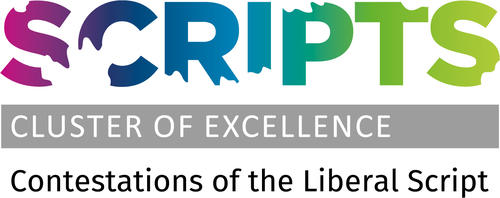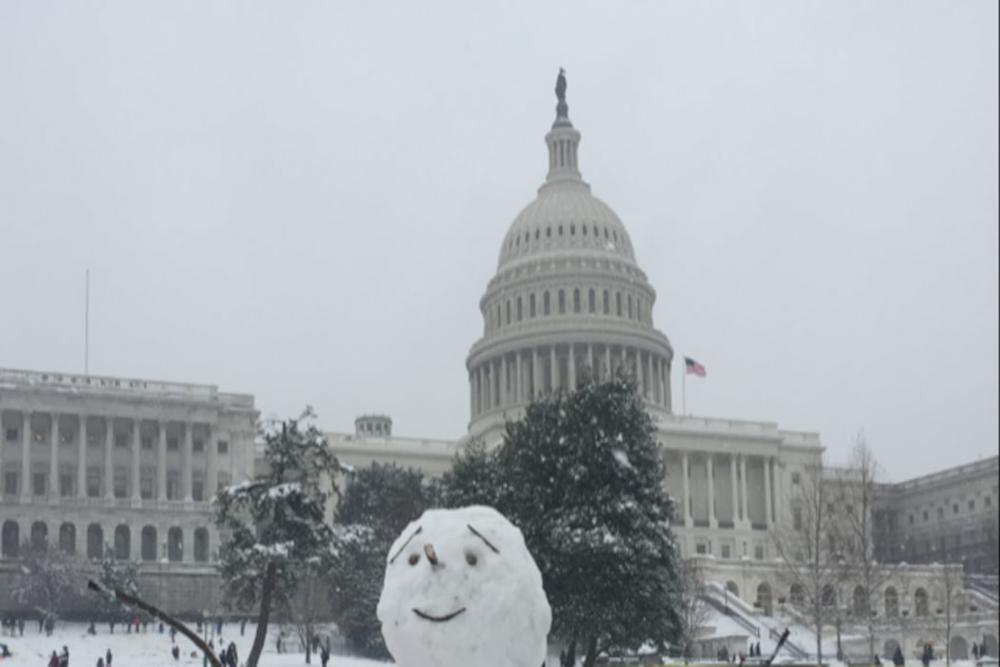Broken Beyond Repair? The Case for Electoral Governance Reform in the United States
by Keith Prushankin
№ 3/2020 from Nov 03, 2020
Keith Prushankin
As we slough through yet another election cycle, a series of depressively familiar spectacles present themselves. Debates that run more like squabbles at the high school lunch table leave us numb and depressed from their lack of concrete proposals to finally get the country moving. The candidates spend more time sniping at one another than developing substantive policies to the point that each one’s political program appears to be a refutation of their opponent’s. Friends and family complain about the only choice being the lesser of two evils and few of us maintain any hope that the endemic problems that the United States has experienced for decades; inaccessible healthcare, inflexible labor markets, extortionist education, grinding racial discrimination, and the incestuous dance of business and politics, will actually improve. 2020 is no different, only this time we have a virus burning its way through the population and a president intent on turning the pandemic into his “mission accomplished” moment, no matter the human cost.
Trouble in Paradise
The United States is engulfed in the worst crisis it has faced since the Great Depression. At the height of the first wave of the pandemic in May, 18.5 million Americans were unemployed, losing their health insurance and that of their families. Beyond coronavirus, the US has the highest number of deaths among high-income nations from preventable causes due to the astronomical expense and byzantine complexity of the healthcare system. The situation is being perpetuated as successive generations leave universities with degrees which to the average employer are not worth the postage paid to deliver them to their recipients, while racking up tens of thousands (or hundreds of thousands in some cases) of dollars in student debt. Tomorrow’s leaders are already today’s debtors.
The fabric of the national compact is frayed and torn throughout. Public executions by the police and armed terrorists occupying legislative buildings and attempting to kidnap elected officials have rendered our state a joke to our detractors, and a horror show to our friends. The despair many Americans feel is compounded by the sense of political homelessness as we cast about for someone, some party, some outside force to save us. The best the establishment could deliver was Joe Biden: a politically uninspiring gerontocrat devoid of originality and the charisma to turn his plans into reality. Many Americans rally behind Donald Trump, in whom they see a champion of those left behind by globalization and scorned by big-city elites. By putting their trust in Trump, an unhinged egotist whose toxic rhetoric translated into unprecedented benefits for the super-rich and an increase in political polarization that leads some to suggest we are on the verge of a crisis akin to the breakup of Yugoslavia, his supporters find themselves equally frustrated and equally left behind. Republicans and Democrats alike are being sold on name recognition and a few thin policy proposals, and are left feeling frustrated, betrayed, and embittered as the wealth gap continues to rise, upward mobility disappears, and job loss, bankruptcy, and eviction lurk like ever-present ghosts in the dank gloom of the pandemic fog.
The devolution of the democratic system into a gridlocked mess of zero-sum infighting and outrageous perks for connected insiders is not a situation from which a few clever politicians can catapult the nation back onto a 1990s “end of history” style upward trajectory. With American politics appearing as a zero-sum game in which the goals of laying blame and getting reelected surpass those of legislating and governing, the notion that the policies Americans need will come out of the Democratic or Republican party machines appears increasingly vain.
The 18th century architects of the constitution engineered the mechanisms of constitutional change to ensure maximum compromise among the most people, requiring passage by two-thirds of the House and Senate, and ratification by three-quarters of state legislatures. The authors of the constitution envisioned a chamber of reasonable statesmen coming to a mutually acceptable compromise. It would be wishful thinking to imagine that this is a possibility in the caustic environment of hyper-partisanism that eats away at our political landscape.
”Morning in America” has given way to the harsh light of day, unmasking the failures of the political system. Americans must collectively engineer solutions to claw back the sun from sinking into the twilight of our democratic experiment.
One dollar, One Vote
A series of institutional changes in the form, function, and role of Congress represent a starting point for invigorating our democratic system. The limitation of campaign financing is essential to ensuring the egalitarian character of American democracy. The “one dollar, one vote” model that has come to dominate elections results not in a race to design more responsive policies, but a race to fundraise and outspend one’s political opponents. It is only logical that under this model, the constituents with the most to give have the greatest access to the candidates and a heightened influence on the content of their platforms. Indeed, it is telling that approximately 400 super rich families contributed nearly half of all campaign spending during the 2016 election cycle, which in the end totaled $1.5 billion raised by the candidates themselves, and an addition $643 million raised by the army of corporate super PACs (political action committees). At the time of writing (October 2020), total spending for the Trump-Biden matchup amounted to $14 billion, with nearly $2.6 billion from super PACs and “dark money” groups. 2020 has become the most expensive election in American history, and is twice as expensive as the 2016 cycle. This is hardly the amalgamation of the pocket-change contributions of masses of politically motivated citizens. This money comes from massive and well-organized political-industrial machines with the resources to ensure that their priorities are met in the electoral programs of their parties. It is illustrative that 0.99 percent of donors are responsible for 75.08 percent of contributions in the 2020 electoral cycle.
The amounts contributed to contemporary political campaigns speak to just how unreachable financial political participation is to the typical voter. The average contribution to presidential candidates from individual donors between 2019 and 2020 has been $200,594,043; for House candidates $1,085,981; and in the Senate, $8,676,247. For the average America, earning the median wage of $51,916.27, contributions of this size are simply unreachable. Political power through democratic participation is diluted to insignificance. The infamous Supreme Court case Citizens United v. FEC (2008) solidified this state of affairs, granting corporate spending the status of protected political speech. The blockage imposed by the Supreme Court is a generational setback, especially in the light of the appointment of yet another hard-right justice, Amy Coney Barrett. At this point, it seems that a revision of this decision is unlikely, though until the time that more democratically conscious justices are appointed to facilitate the correction of the court’s startling corporate pandering, the legislature and executive must do their part to ensure a pluralistic and egalitarian approach to electoral governance.
The implementation of campaign finance limits in the electoral process will increase the weight of each individual vote and reduce the influence of large and well-connected individuals and groups on policy. The democratic character of this change is well in line with the goal of electoral democracy: that the people decide an election. This change will carry another positive effect: the opening of the rigid two-party system into a pluralistic, multi-party democracy. The current two-party death dance presents American voters with a narrow binary choice; a rush to the bottom as parties pander to a plurality of special interests, sacrificing policy coherence for politics designed to entertain and distract, rather than help. More importantly, the institutionalized parties have become tired. These two relics of the past have become complacent, knowing that they have achieved a monopoly on political power in the United States, and that voters will chose between them because there is simply no place else to go. They are the only game in town, and their monopolistic practices would disturb even the most hardened neoliberal economist. The loss of monopolistic status would force the Republicans and Democrats to innovate or risk losing power to parties that can meet the needs of the population.
Legislators for Life
The introduction of campaign finance caps will only partially help focus the attention of our democratic representatives. A term limit on members of Congress will remove reelection as a motivational factor from the daily calculus of the politician’s life. Additionally, and perhaps more importantly, the introduction of term limits will lead to a greater number of citizens directly participating in government than under a system of life-serving career politicians. Moreover, the introduction of fresh perspectives and new ideas into the legislative process will more than compensate for the loss of institutional memory held by multi-decade members of the governing body. While proponents of the status quo will undoubtedly argue that an understanding of how to move the levers of power born of seniority is a valuable contribution to government, let us not forget that ours is a democratic government. The fall of a democratic system into the hands of the same cliques of politicians spanning the course of decades hardly makes Congress the representative and responsive body it is purported to be. It is clear that business as usual can no longer pretend to meet the needs of the American People. More vacancies for more representatives over time will help change the way we govern, while making government more representative and more responsive to the evolving needs of the electorate.
Government by the People
The implementation of these two structural changes to the American legislature will render our democratic system more participatory and more representative of the electorate from which it is drawn. Setting caps on financial contributions and establishing a common election fund will broaden the opportunity for political participation from a narrow clique of millionaires to a broad spectrum of the American People. These new representatives will know the needs of their communities, as they will have experienced them firsthand. It is the teachers, the industrial workers, the shop assistants, and the healthcare professionals who are best placed to design the policy solutions to meet the needs of the country. The introduction of term limits will promote the provision of fresh and new ideas and voices in the legislature. Abraham Lincoln spoke of the United States as a “government by the people, for the people.” Reform of the legislature brings us a step closer to fulfilling that vision.
As to who can amass the political will to engineer these solutions, only time will tell. If history is any guide, desperation will provide a solution, but we are running out of time. The sun is beginning to set.
Keith Prushankin is a doctoral researcher with the SCRIPTS Program at Freie Universität Berlin, where he investigates democratic backsliding and populism in Central and Eastern Europe.

